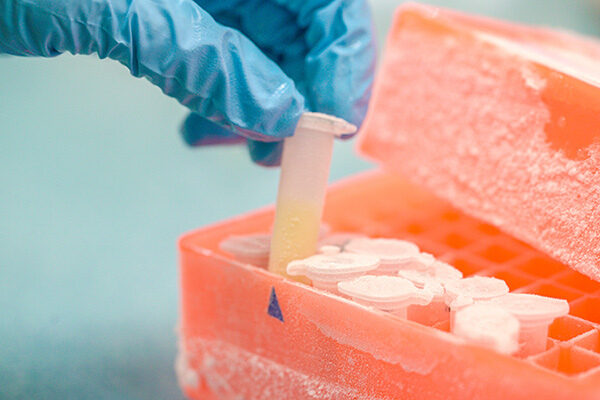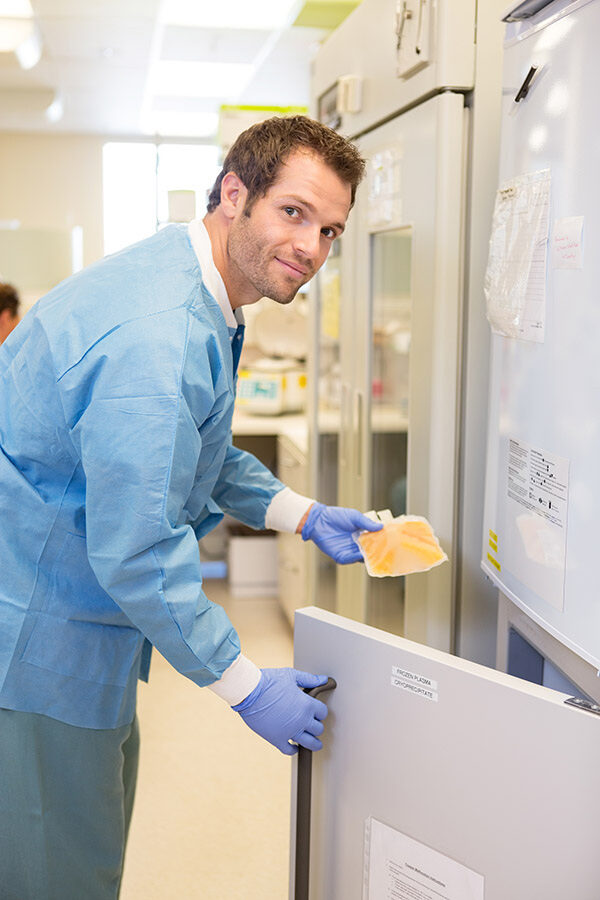Blog
Using LIMS Biobank Management Software to Drive ISO 20387 Biobanking Standards
13th June 2023

Biobanks and the specimens they hold are key to modern drug discovery and development. The ISO standard 20387 ‘General requirements for biobanking’ has been developed to define the requirements for competence, impartiality, and consistent operation of biobanks to ensure the quality of the specimens and data they hold. This article will describe how Autoscribe’s Matrix Biobank Management LIMS (Laboratory Information Management System) can help biobanks meet the requirements of ISO 20387.
What are Biobanks?
Biobanks hold biological specimens and related data. They accept (accession) biological material, along with relevant meta data to be used for research and development purposes. The meta data may include consent information provided by the contributor, defining how the material can be used. The biobank can then process, store, and distribute the samples and associated data as required, in accordance with regulatory requirements and as defined by any associated consent information.
As well as consent information, specimen meta data can include clinical and family history, demographics, and test result data derived from the sample (for example, DNA markers critical to the research area).
Maintaining biobank collections can be challenging due to the large number of specimens being stored, usually in multiple freezers or other storage locations. Samples must be kept safe and secure within the biobank yet be readily available when required. Records of all actions applied to the samples must be maintained, for example each time a sample is moved, thawed, frozen, or lent out for research. This ensures the integrity of the samples and their traceability.
Biobank Quality Standards
The International Society for Biological and Environmental Repositories (ISBER) released their 1st edition of Best Practices for Repositories in 2012. The fourth edition of this guide was released in 2018, coinciding with the release of ISO 20387:2018. This international standard has allowed accreditation bodies to setup formal accreditation and management systems used across the industry to promote confidence and reliability. Both the ISBER and ISO standards cover much the same ground.
General Requirements (ISO 20387 Section 4)
Section 4 of ISO 20387 covers:
- 4.1 General Requirements
- 4.2 Impartiality
- 4.3 Confidentiality
Data within a biobank often contains sensitive personal health information about the donor. Access to the Matrix Biobank Management System is therefore tightly controlled. Users must login with individual usernames and passwords, and only have access to the data they need to perform their tasks. Donor data is generally anonymized to protect individual identities, but donors also have the right to withdraw their consent at any time. Therefore, specimens must be easily traceable so they can be withdrawn from use.
The Matrix Biobank Management System also uses role-based permissions. Each role will have different permissions which limits the screens and data they can access. For instance, only certain staff might be allowed to remove samples for research or return them to the collection.
Resource Requirements (ISO 20387 Section 6)
Section 6 of ISO 20387 covers:
- 6.2 Personnel
- 6.3 Facilities
- 6.4 External Processes
- 6.5 Equipment
Biobank personnel should be adequately trained to perform the tasks they need to do. The Matrix Biobank Management System has a built in Competency Module that records staff training, and can block them from carrying out tasks unless they are certified to perform them.
An inventory module within the Biobank allows easy management of chemicals, reagents and kits used within the Biobank. The system monitors stock levels and provides reorder reminders as available stock is used.
The Matrix Biobank Management System also includes a module to manage the calibration and maintenance of equipment, such as laboratory instruments. Maintenance and calibration periods can be assigned, and equipment automatically made unavailable if maintenance or calibration does not occur as defined.

Process Requirements (ISO 20387 Section 7)
Section 7 of ISO 20387 covers:
- 7.2 Collecting
- 7.3 Reception and Distribution
- 7.4 Transport
- 7.5 Traceability
- 7.6 Preparation and Preservation
- 7.7 Storage
- 7.8 Quality Control
- 7.9 Validation
- 7.10 Management
- 7.11 Non-conformance
- 7.12 Reports
- 7.13 Complaints
This section of ISO 20387 covers the biobank processes from collection through to disposal, as well as quality systems to handle non-conformance and complaints. Matrix Biobank comes with all the screens and functionality you require including registration, reception, processing, testing, storage and transportation/shipping. It will create unique IDs for each specimen, print barcodes based on those unique IDs, and prompt users for any additional clinical information and meta data required during sample registration or receipt. Built-in audit functionality ensures that a complete history of everything that happens to the specimen is recorded, along with a time and date stamp. Therefore the biobank custodian has access to full audits of sample at every stage of its journey. For example, when a specimen is picked for a research project, a record can be kept of how it was transported, and what condition it was in when it arrived at the destination (temperature, packing condition etc.). Maintaining a chain of custody throughout the life cycle of the specimen is key to ensuring compliance with ISO 20387.
A variety of storage options are available including defining and storing specimens as a two-stage process (select the location, then confirm the placement of the specimens into the location), or as a single action (placing specimens directly into the location), to mimic the operating procedures of different biobanks. It is also possible to move the contents of an entire freezer to a different freezer as a single action should a failure occur, and a mass move be quickly required. The flexibility of the graphical interface allows it to be setup to suit any specimen container type, and any size, shape, and capacity of fridge/freezer.
Quality Management (ISO 20387 Section 8)
Section 8 of ISO 20387 includes:
- 8.2/8.3 Documentation
- 8.4 Control of Records
- 8.5/8.6/8.7 Actions, Corrective Actions, Improvements
- 8.8/8.9 Audit/Management Review
Matrix Biobank has a built in Document Management system allowing all key operating procedures to be stored in one place and be instantly available for review. A corrective and preventive actions (CAPA) module is built into the system to accommodate non-conformance issues, improvement ideas, and customer complaints, if needed. Built in reporting tools allow management and audit reports to be created quickly and efficiently as and when they are needed.
Summary
ISO 20387:2018 provides a framework against which biobanks can measure themselves to maintain high-quality standards, and ensure they are fit for purpose. Matrix Biobank encapsulates and codifies this standard to securely manage biospecimens, associated meta data, and donor consent information. Individual login to the system with role-based assignment of privileges ensures users only have access to the minimum data they need to do their job, helping to safeguard personal data. The highly flexible storage functionality allows samples to be placed, pulled and sent to the chosen research projects quickly. Built-in tracking ensures a complete chain of custody for every specimen.
To find out more about the Matrix Biobank Management System see our industry specific Biobank page. From here you will be able to download the Matrix Biobank brochure and a recent case study.